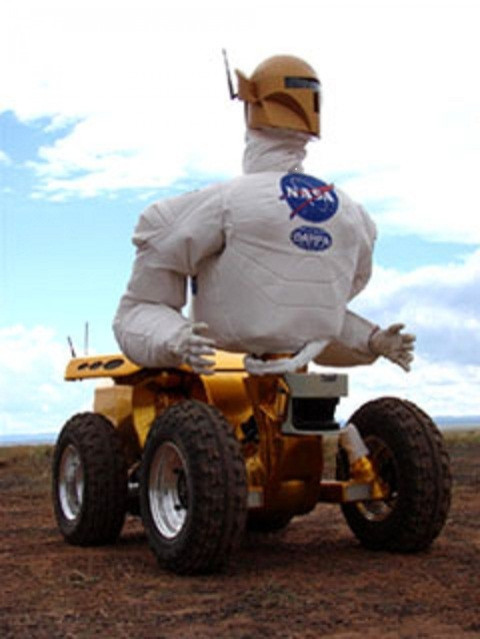NASA's Human-like Robot Astronaut Comes Alive Saying, 'Those electrons feel GOOD!'

NASA's human-like 300-pound robot, Robonaut 2 or R2, which reached the International Space Station six months ago to act as an astronaut's assistant, has been powered up for the first time.
The humanoid Robonaut 2 was delivered to the ISS as part of the STS-133 mission on the Discovery Space Shuttle in Feb. 2011.
R2 came to life after flight engineers Satoshi Furukawa and Mike Fossum assembled and powered the humanoid for the first time since its arrival.
Robonaut's profile page on Facebook recorded the following message: My Deputy Project Manager said I behaved myself and got an A. I'm going for Valedictorian in the next test.
Early Tuesday morning, a Facebook alert stated: Those electrons feel GOOD! One small step for man, one giant leap for tinman kind.
NASA's official page states that a Robonaut is a dexterous humanoid robot built and designed at NASA Johnson Space Center in Houston. Robonauts are designed to work side by side with humans, or to go where the risks are too great for people. They are intended to expand the ability for construction and discovery. Central to the effort was equipping the robot with the capability called dexterous manipulation, embodied by an ability to use one's hand to do work. The key challenge has been to build machines with dexterity that exceeds that of a suited astronaut.
Robonaut 2 is a state-of-the-art highly dexterous anthropomorphic robot designed in partnership with General Motors. Like its predecessor Robonaut 1, R2 is capable of handling a wide range of EVA tools and interfaces, but R2 is a significant advancement over its predecessor. R2 is capable of speeds more than four times faster than R1, is more compact, is more dexterous, and includes a deeper and wider range of sensing.
Advanced technology spans the entire R2 system and includes: optimized overlapping dual arm dexterous workspace, series elastic joint technology, extended finger and thumb travel, miniaturized 6-axis load cells, redundant force sensing, ultra-high speed joint controllers, extreme neck travel, and high resolution camera and IR systems. The dexterity of R2 allows it to use the same tools that astronauts currently use and removes the need for specialized tools just for robots.
Initially R2 will be deployed on a fixed pedestal inside the ISS. Next steps include a leg for climbing through the corridors of the Space Station, upgrades for R2 to go outside into the vacuum of space, and then future lower bodies like legs and wheels to propel the R2 across Lunar and Martian terrain. A four-wheeled rover called Centaur 2 is being evaluated at the 2010 Desert Field Test in Arizona as an example of these future lower bodies for R2.
Robonaut currently has two dexterous arms and hands, a three degree-of-freedom articulating waist, and a two degree-of-freedom neck used as a camera and sensor platform.
Under teleoperator control, Robonaut has been able to perform many high payoff tasks indicating that it could significantly reduce the maintenance workload for human's working in space. Throughout its development, Robonaut has been augmented to include new sensors and software resulting in increased skills that allow for more shared control with the teleoperator, and ever increasing levels of autonomy. These skills range from simple compliance control, and short term memory, to, most recently, reflexive grasping and haptic object identification using a custom tactile glove, and real-time visual object tracking.
© Copyright IBTimes 2024. All rights reserved.





















